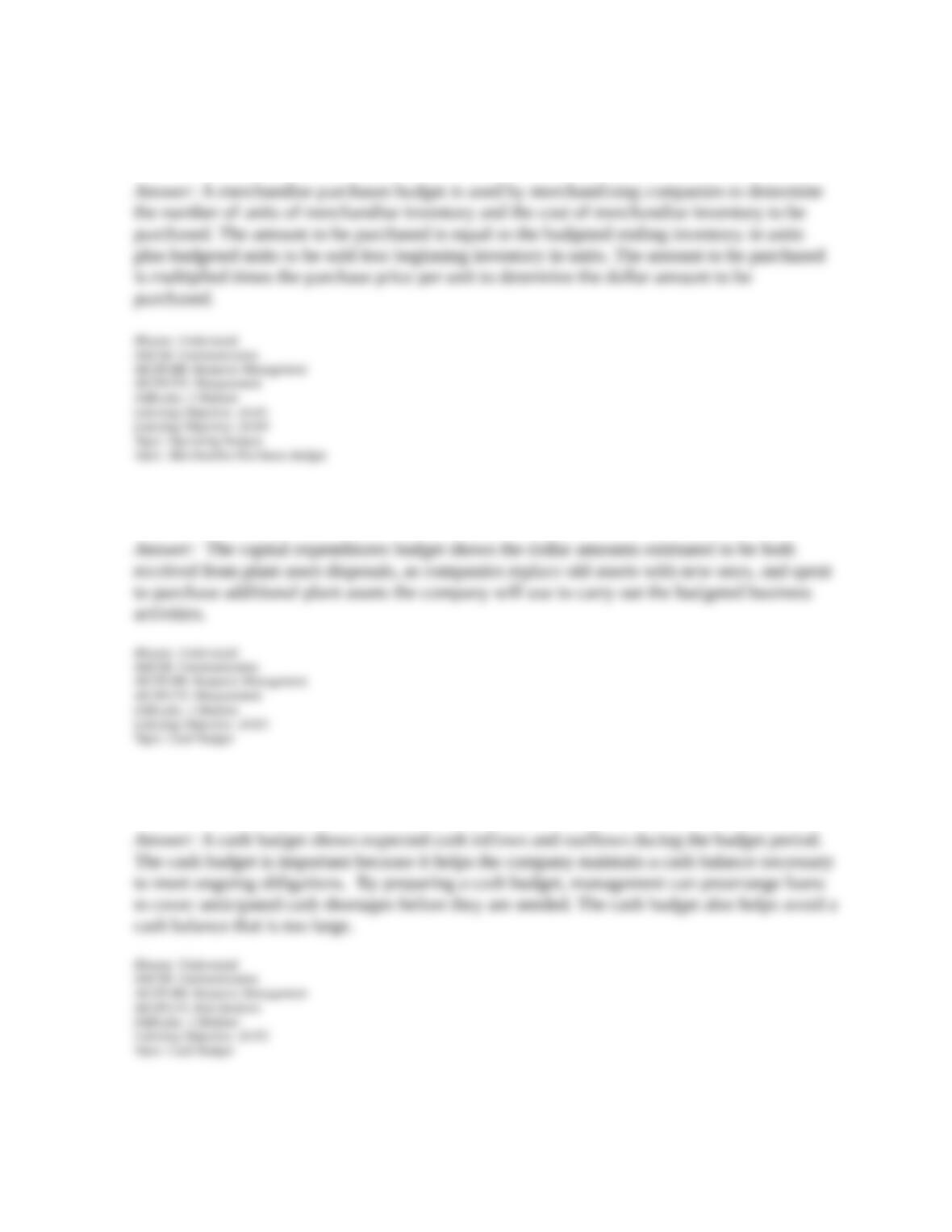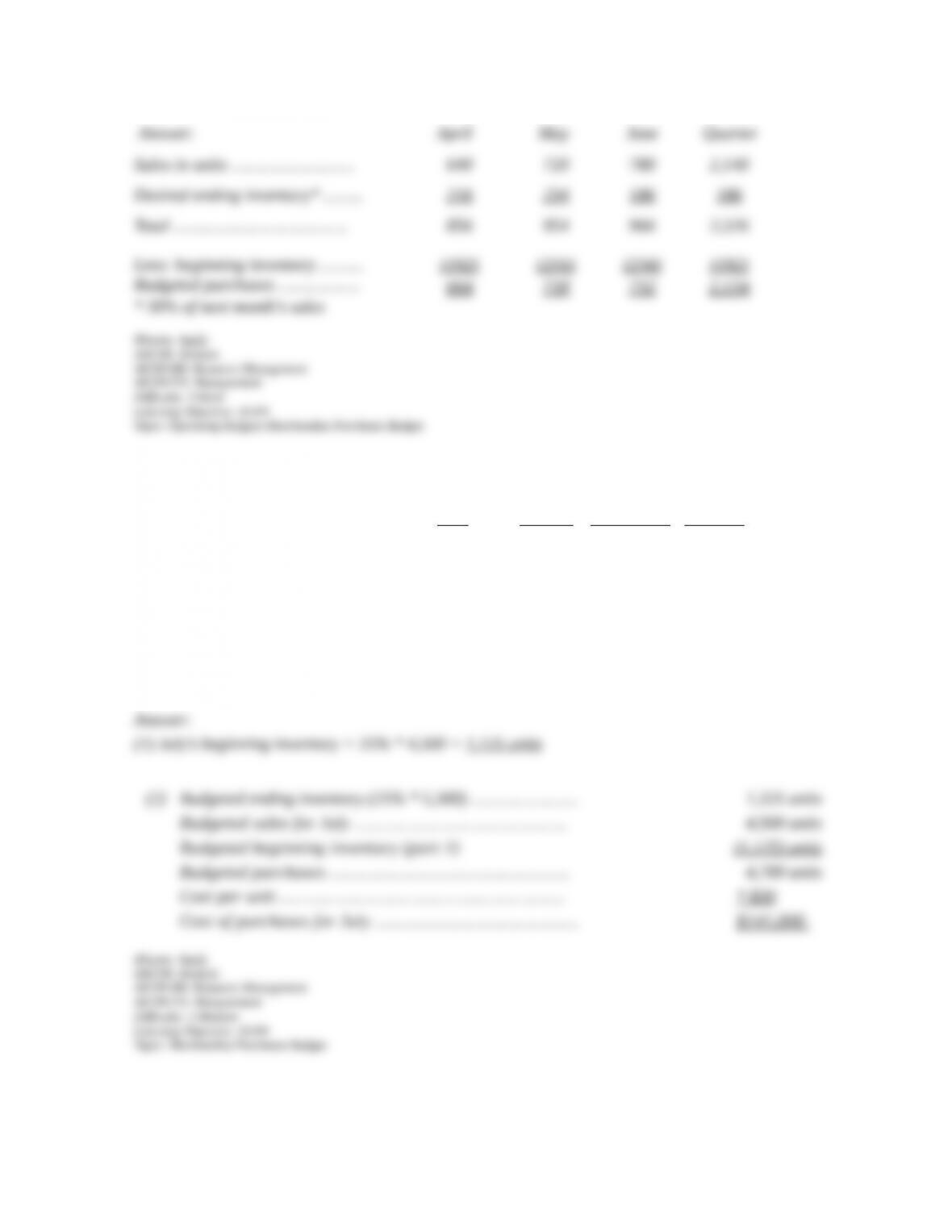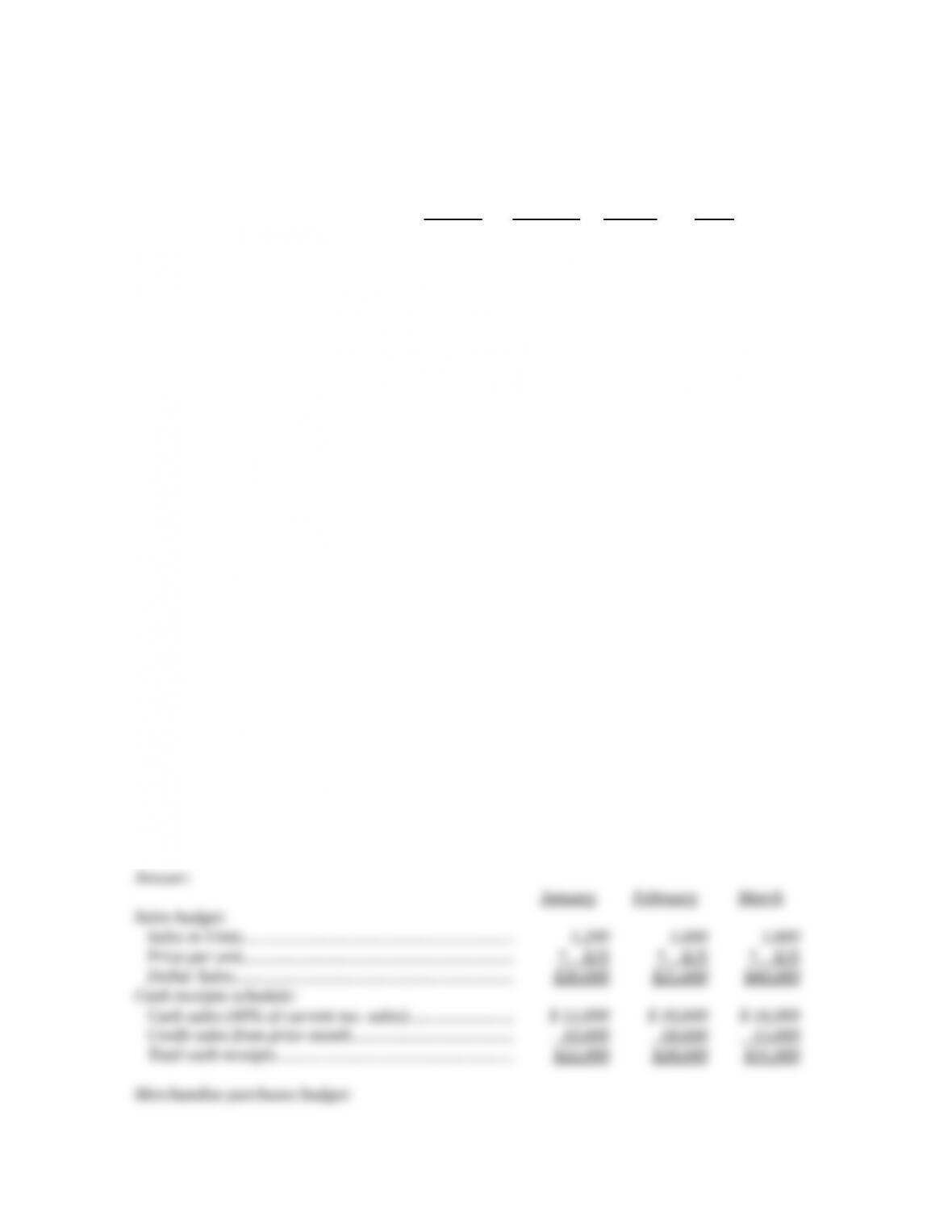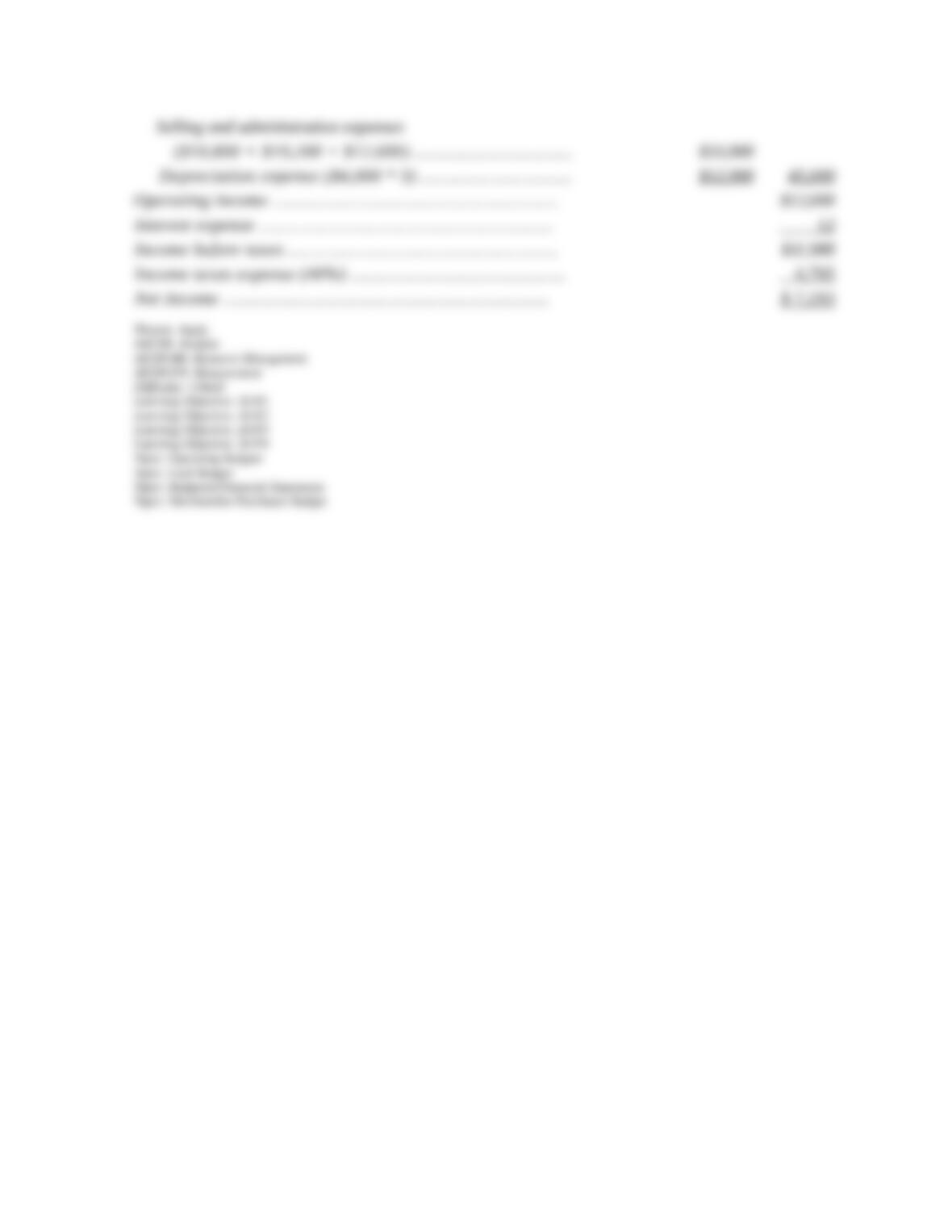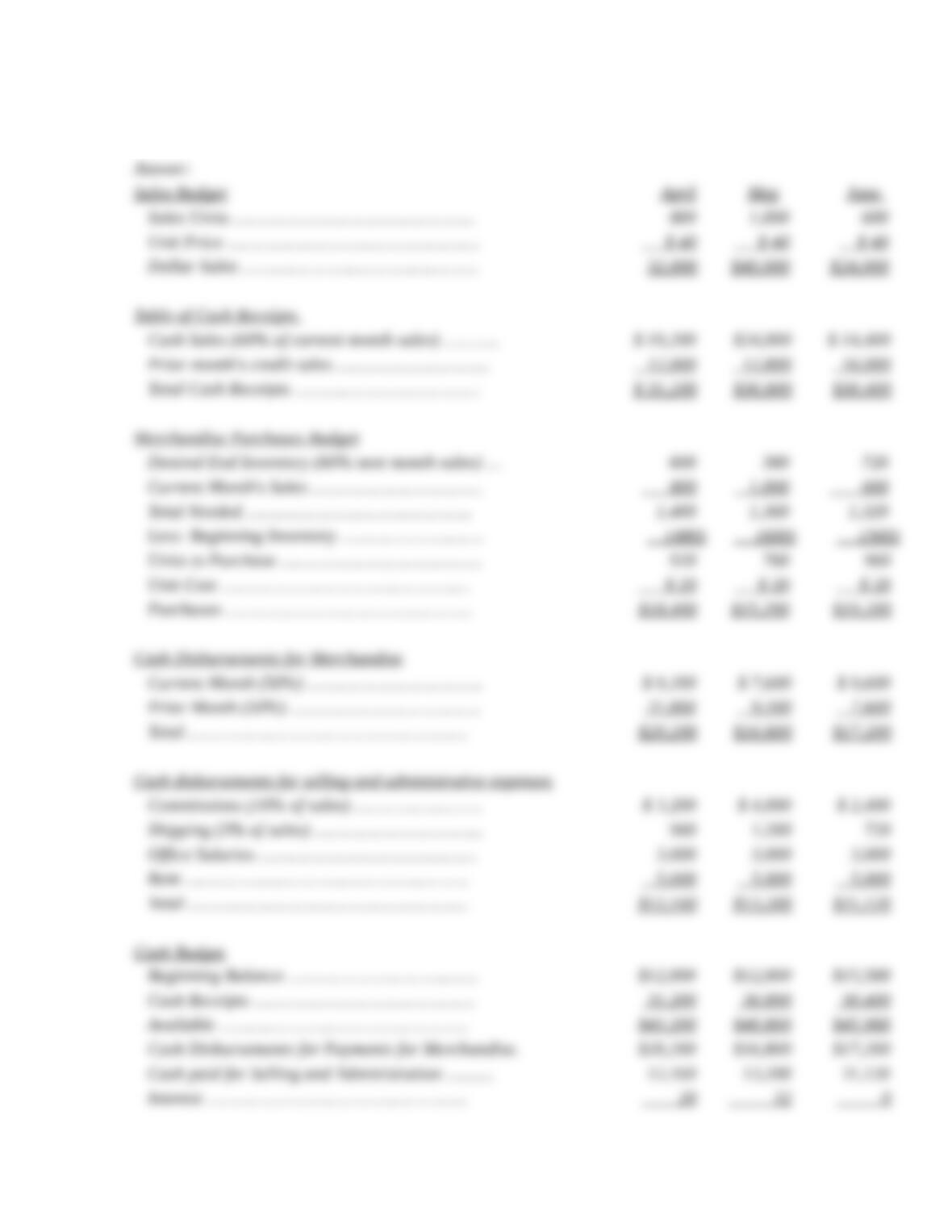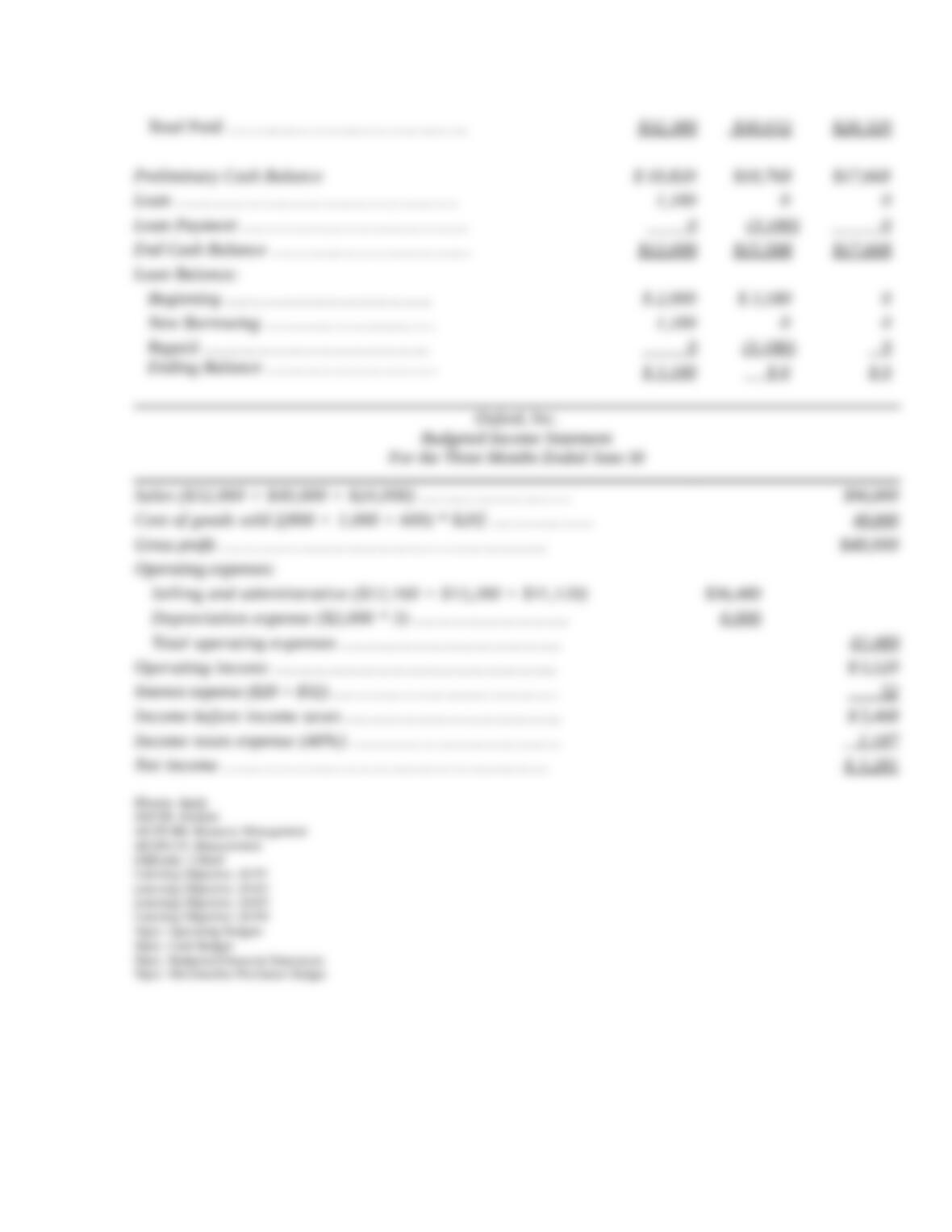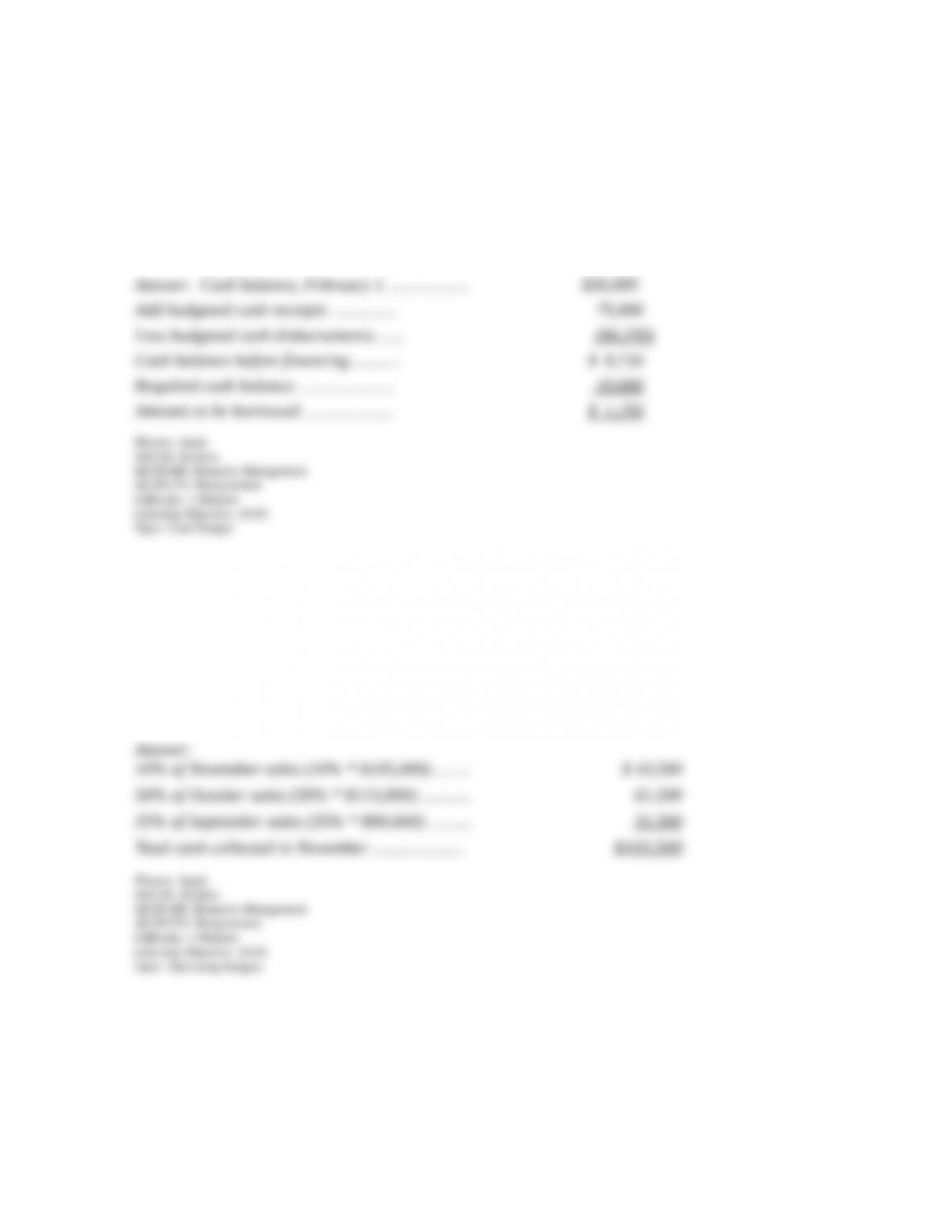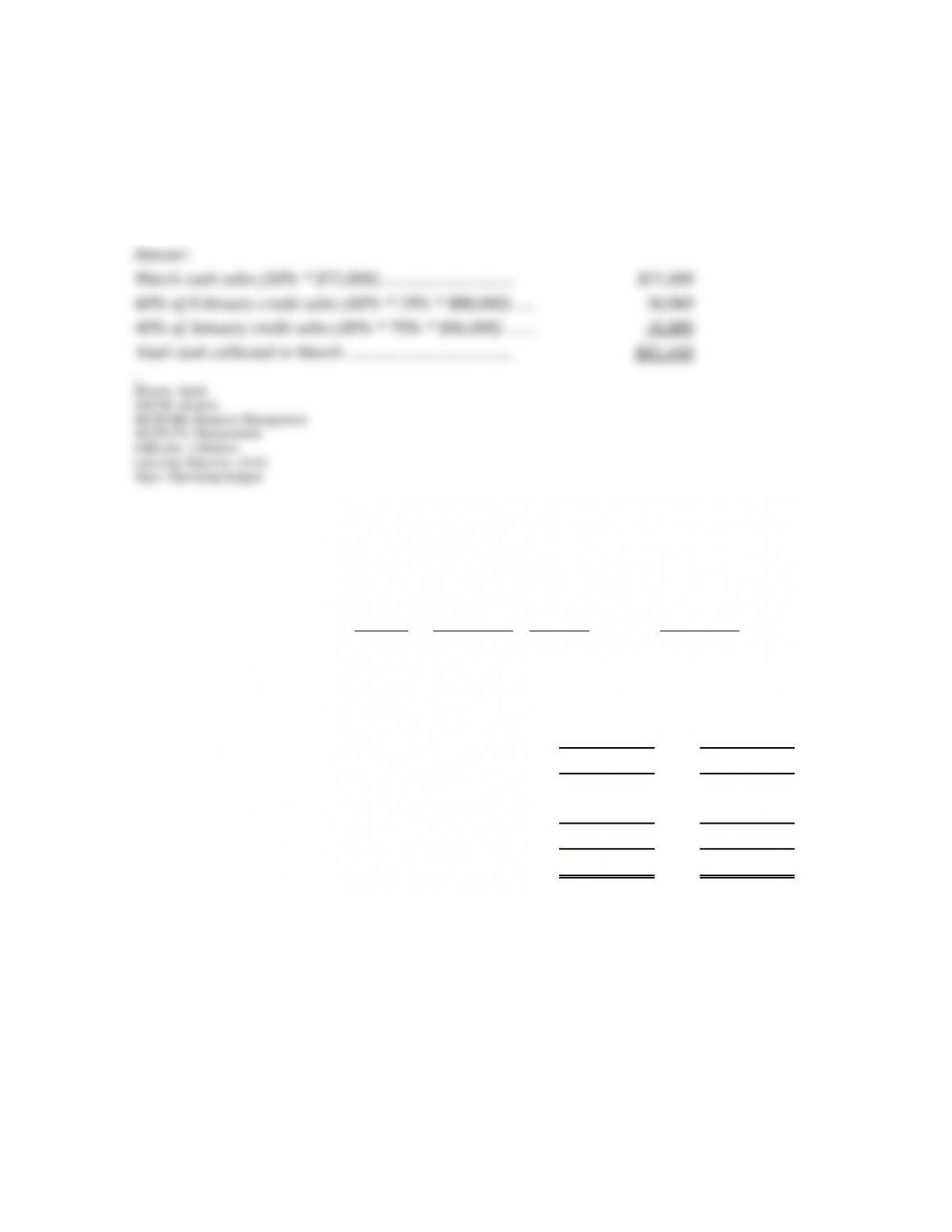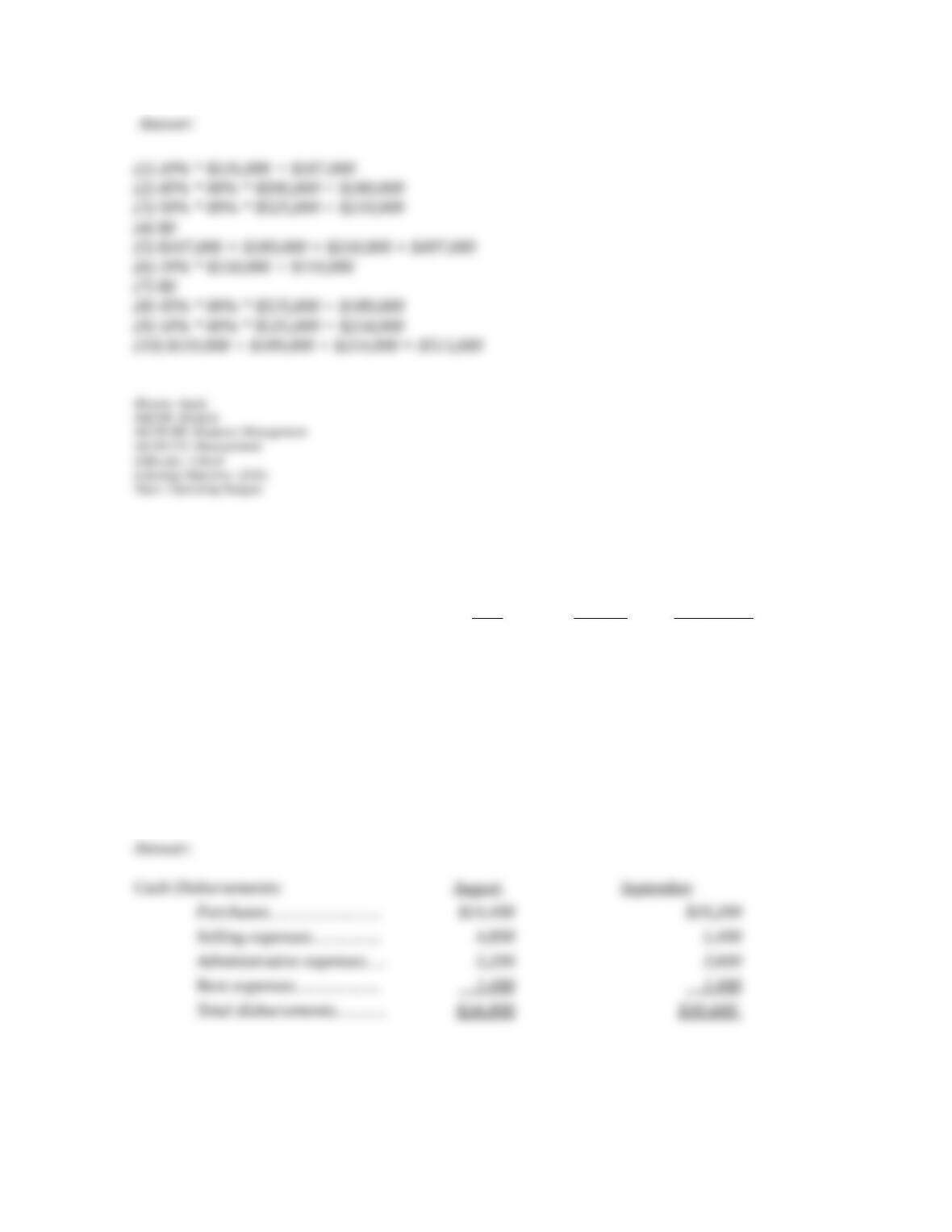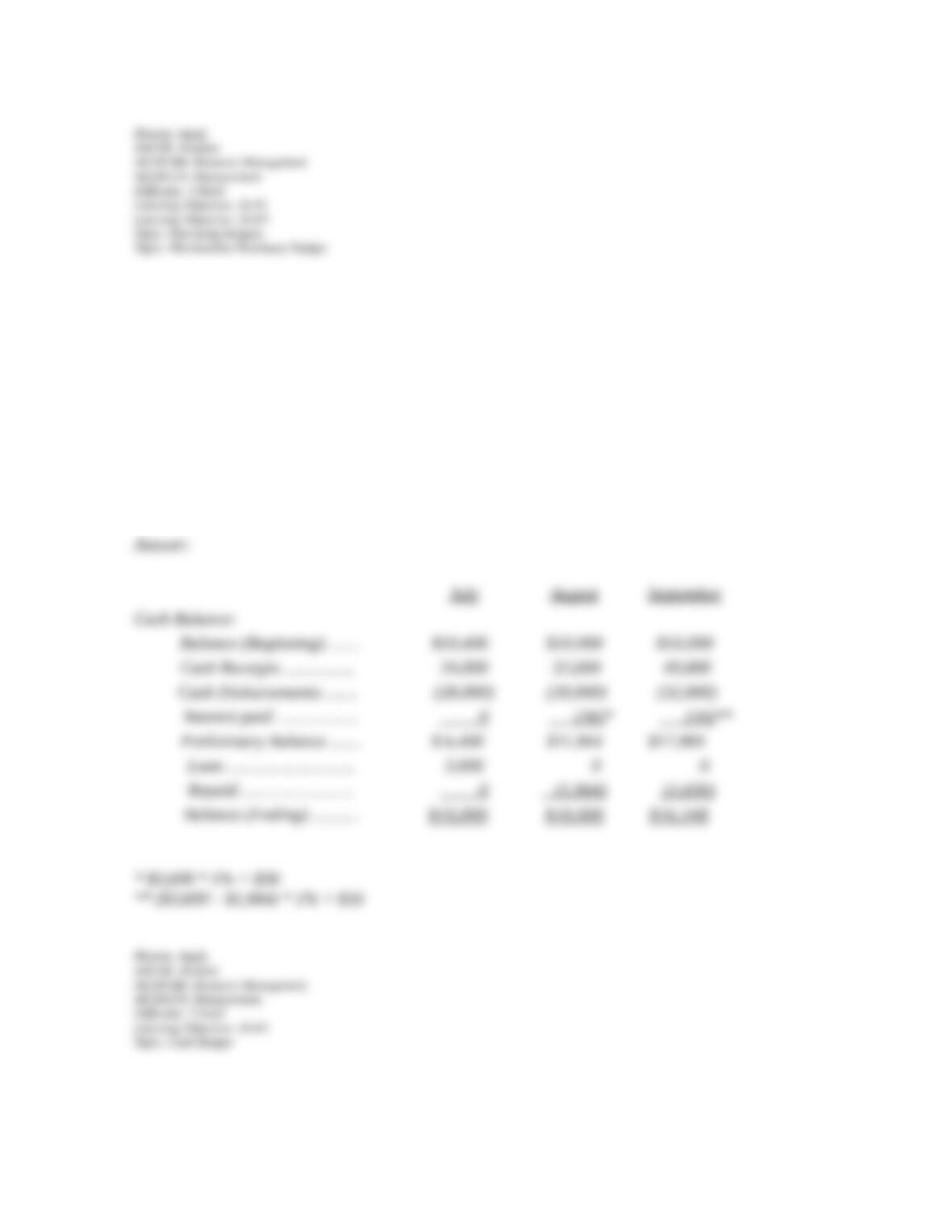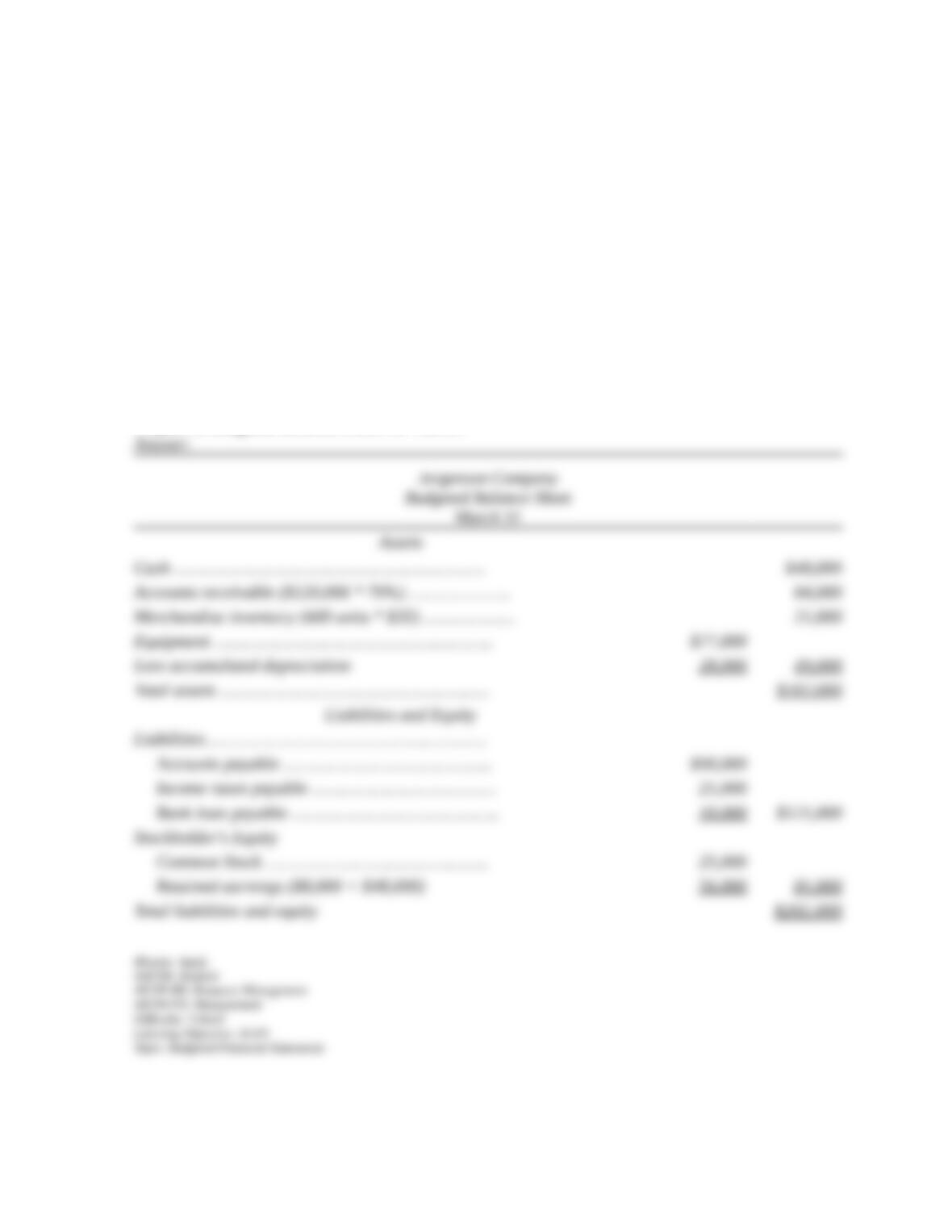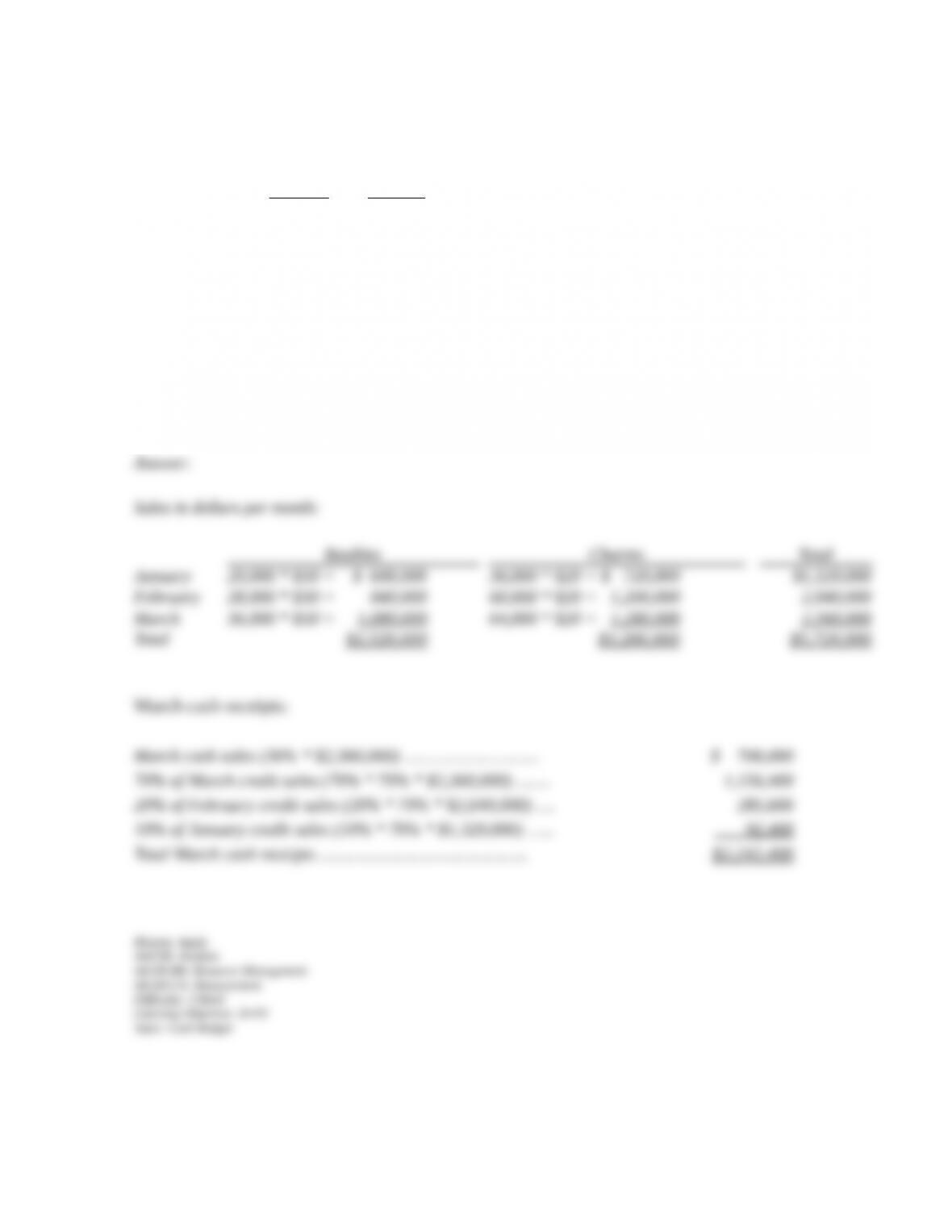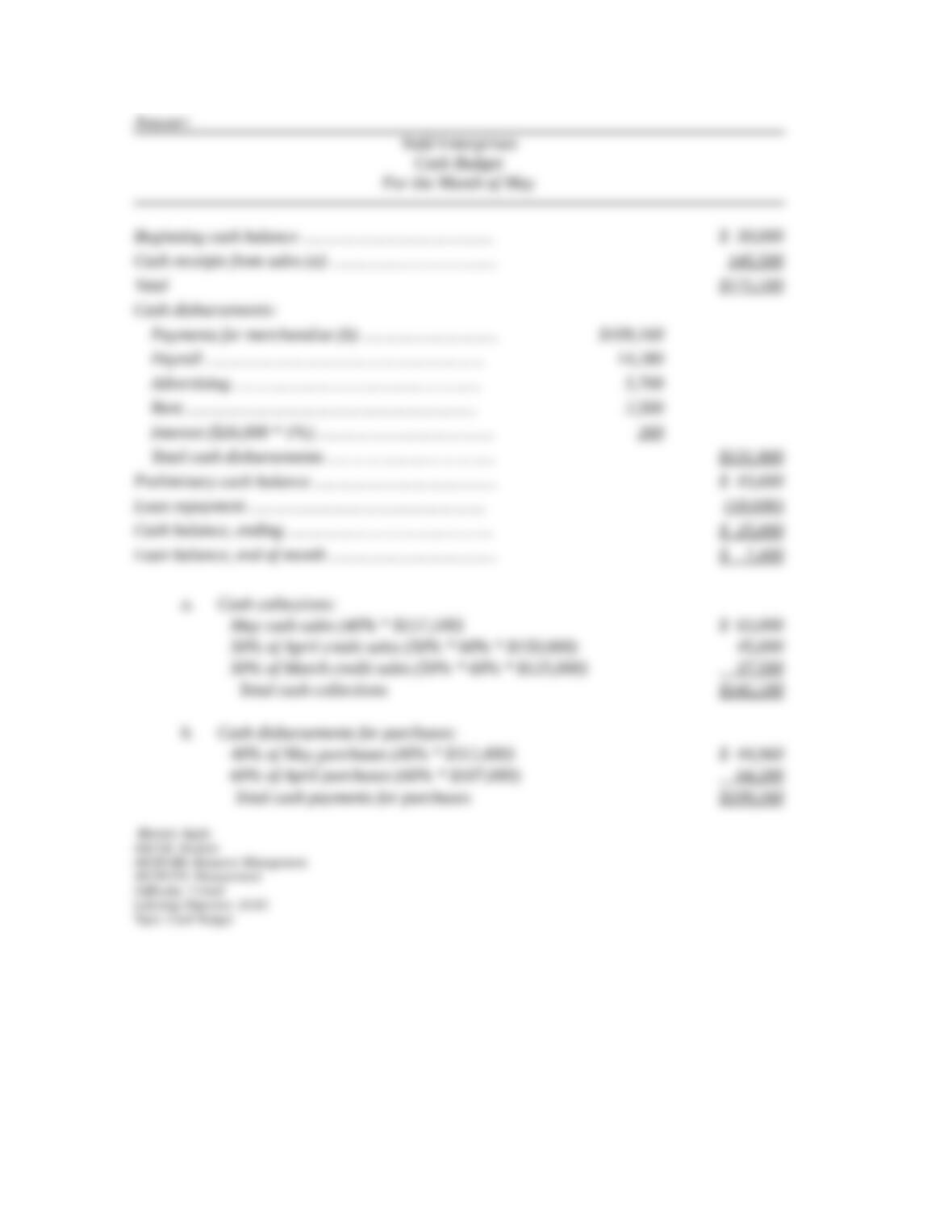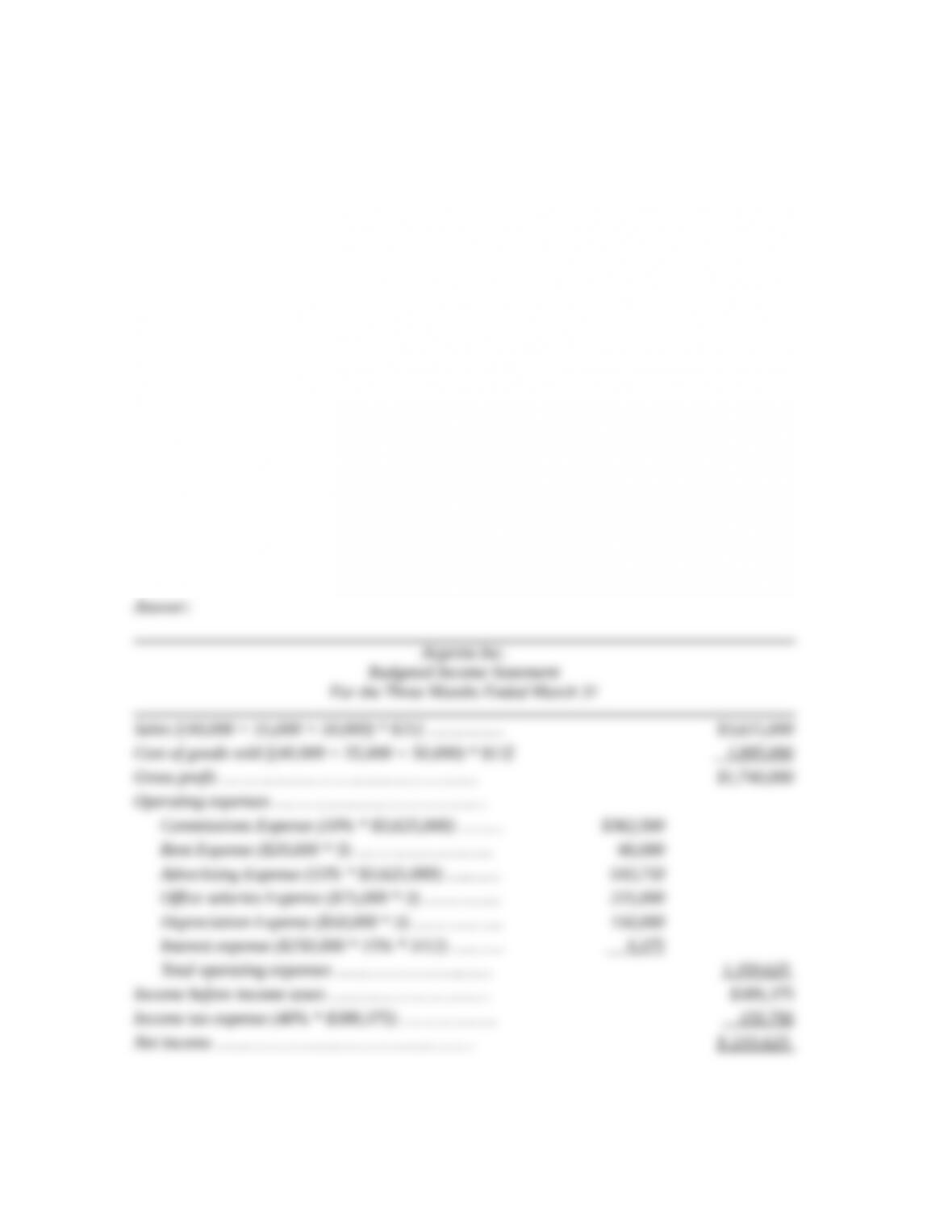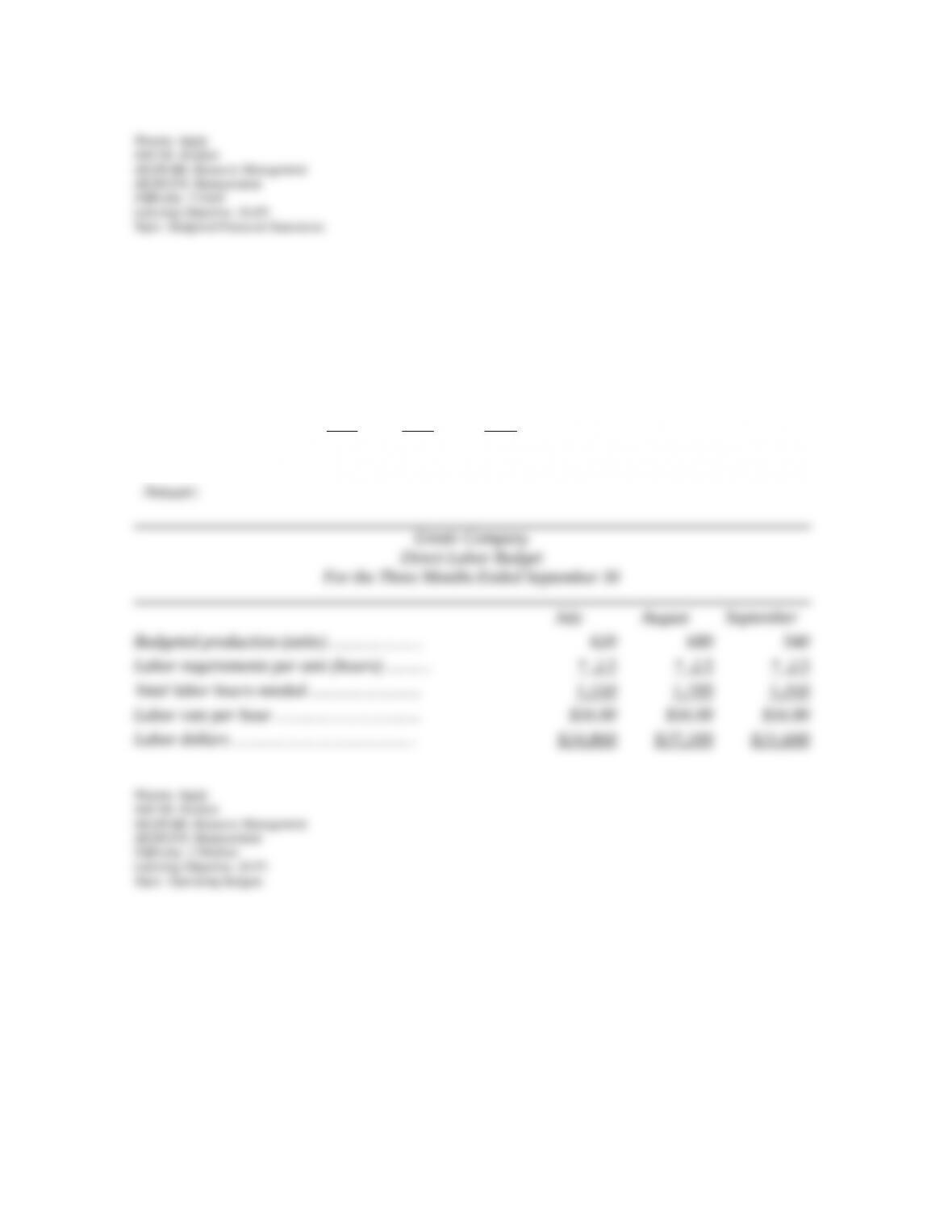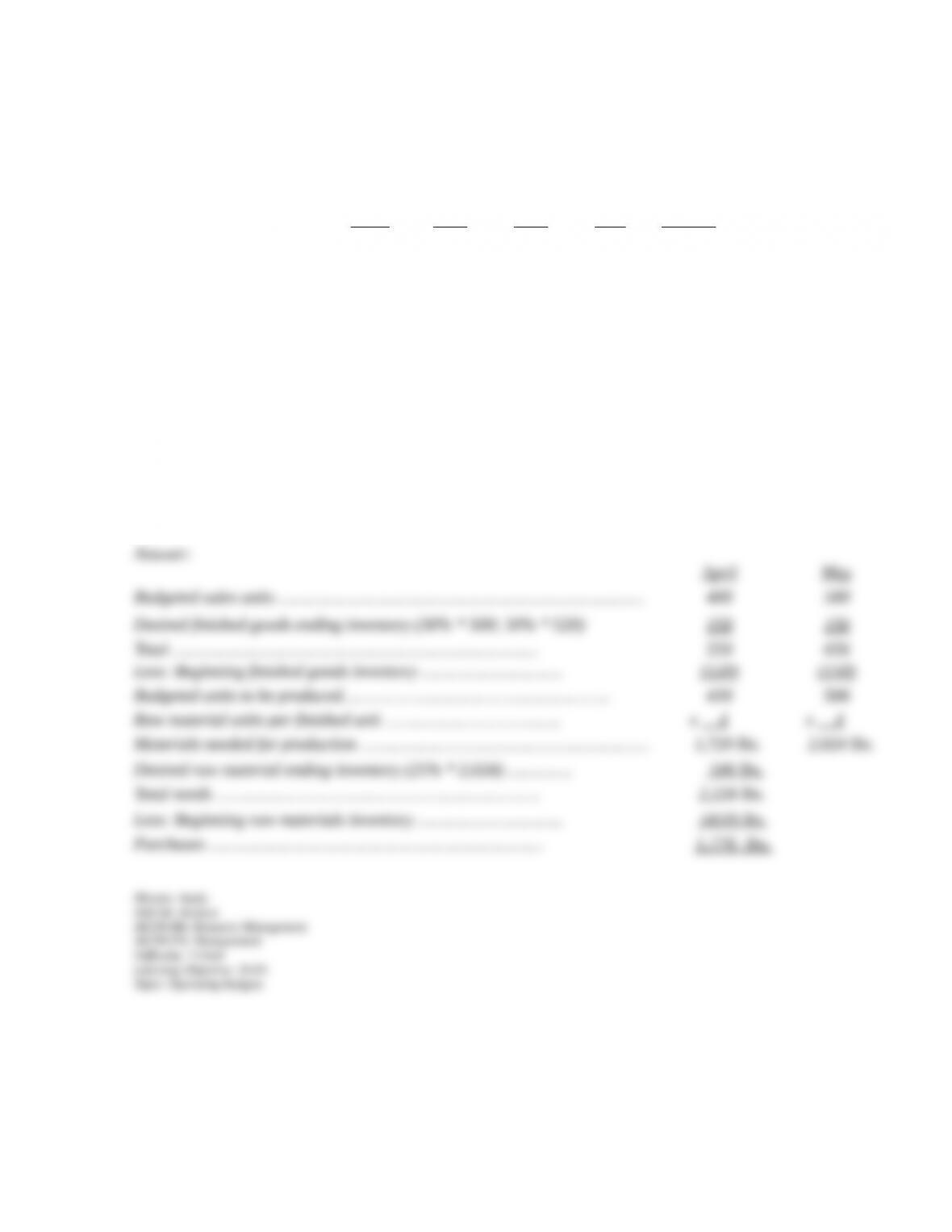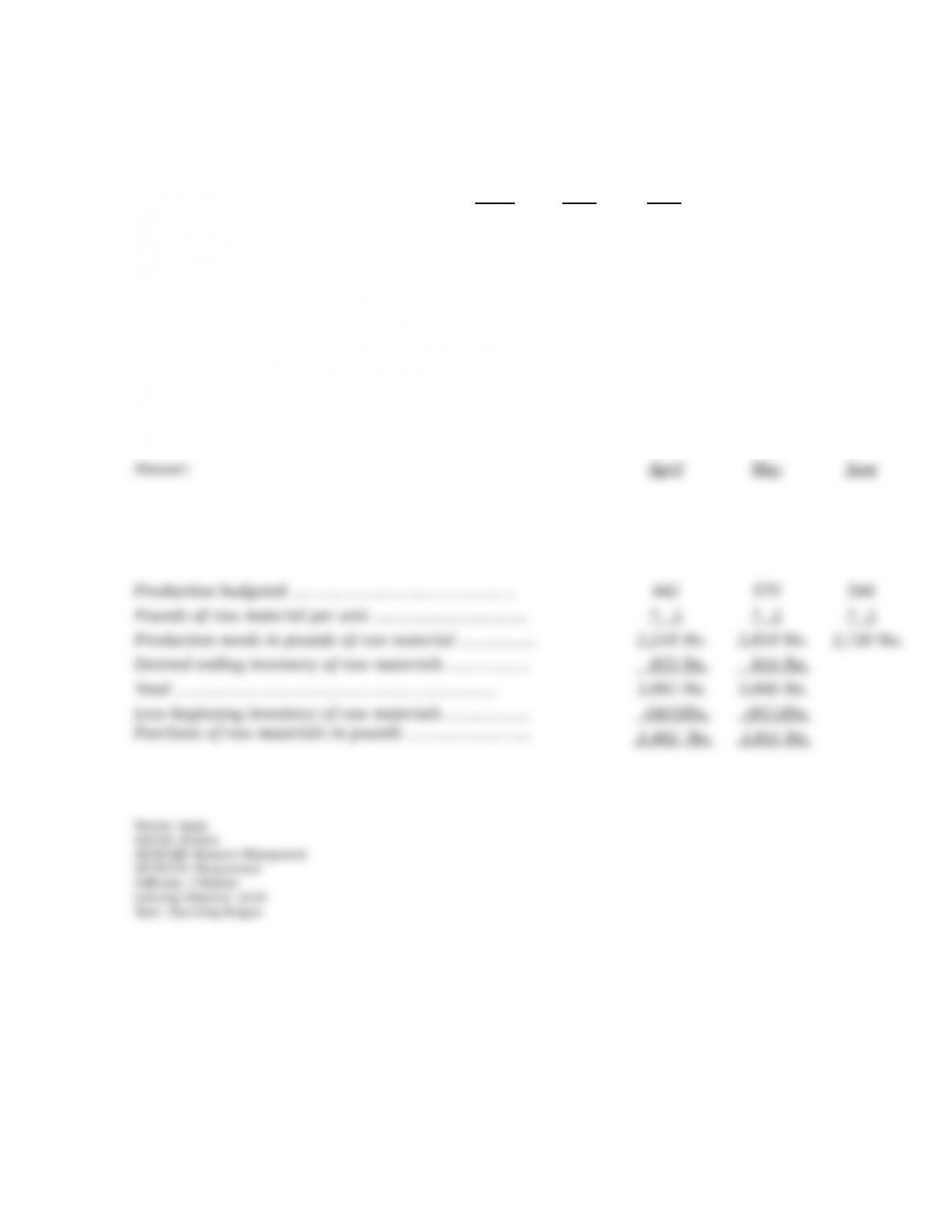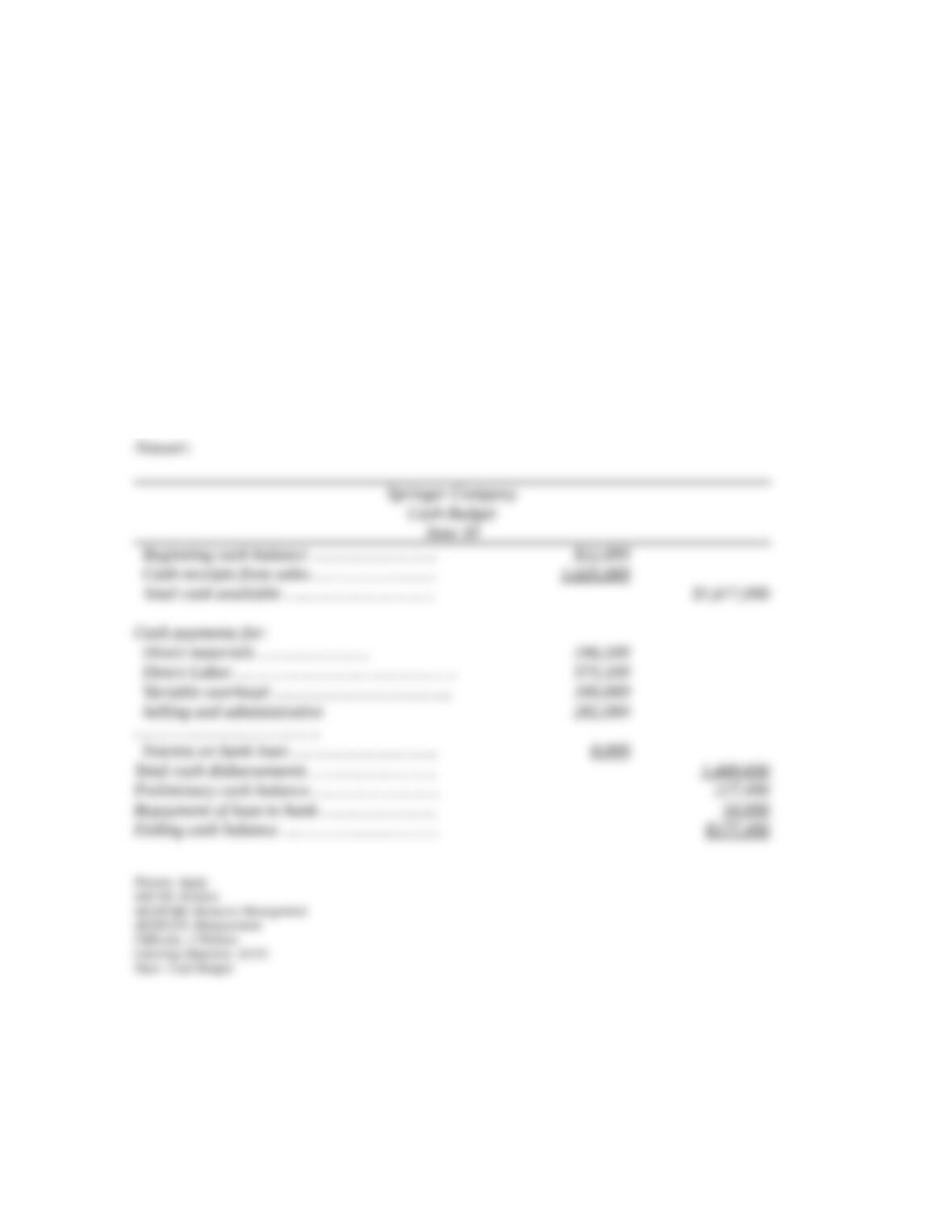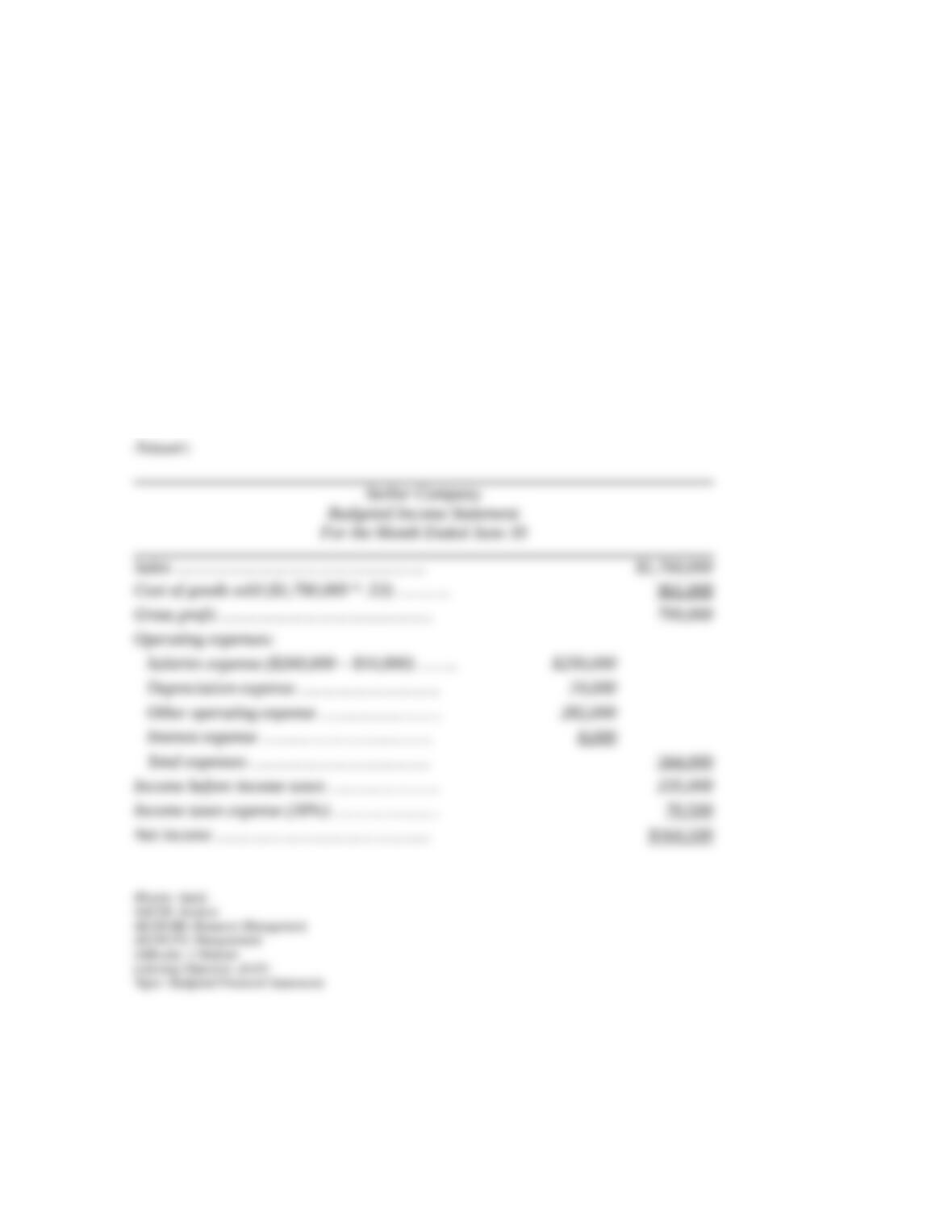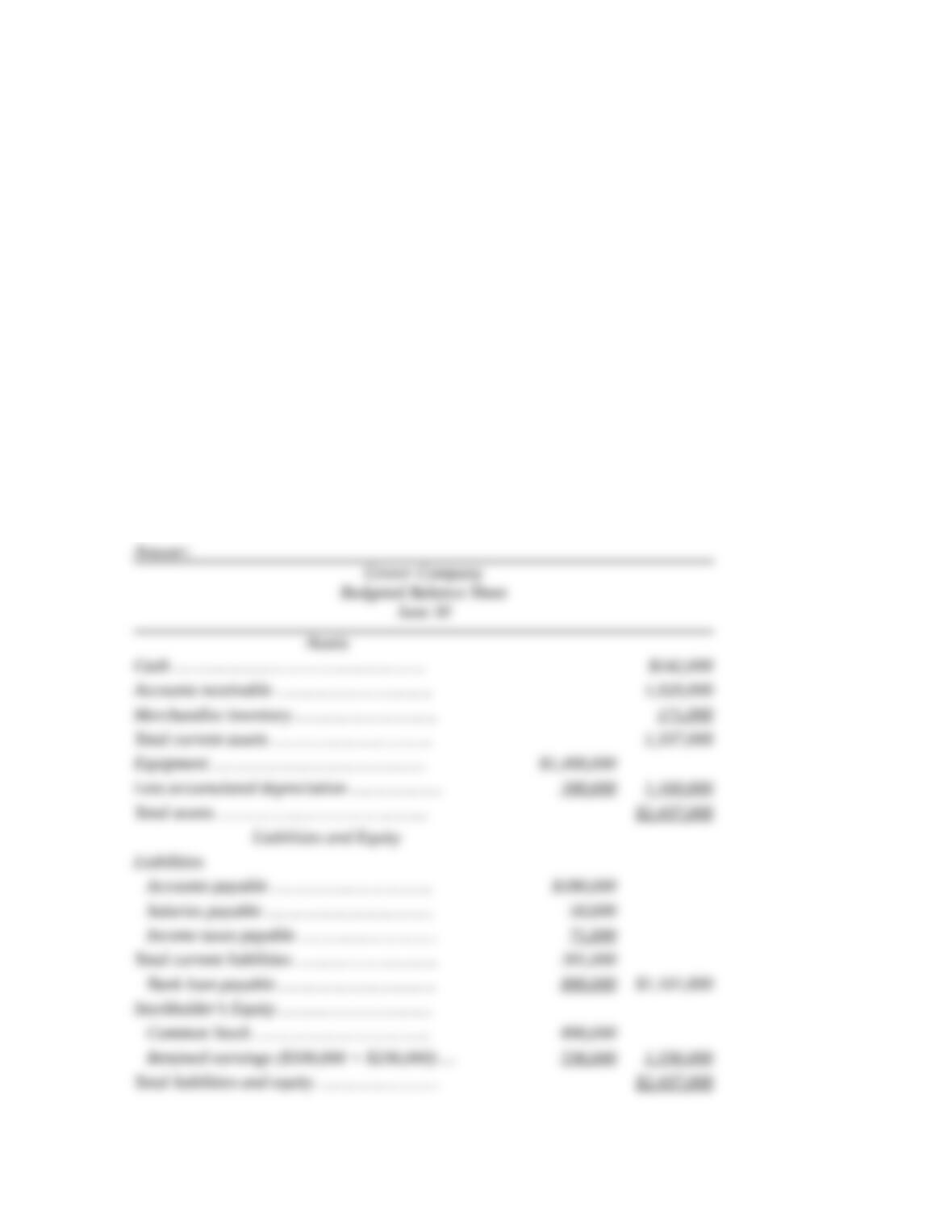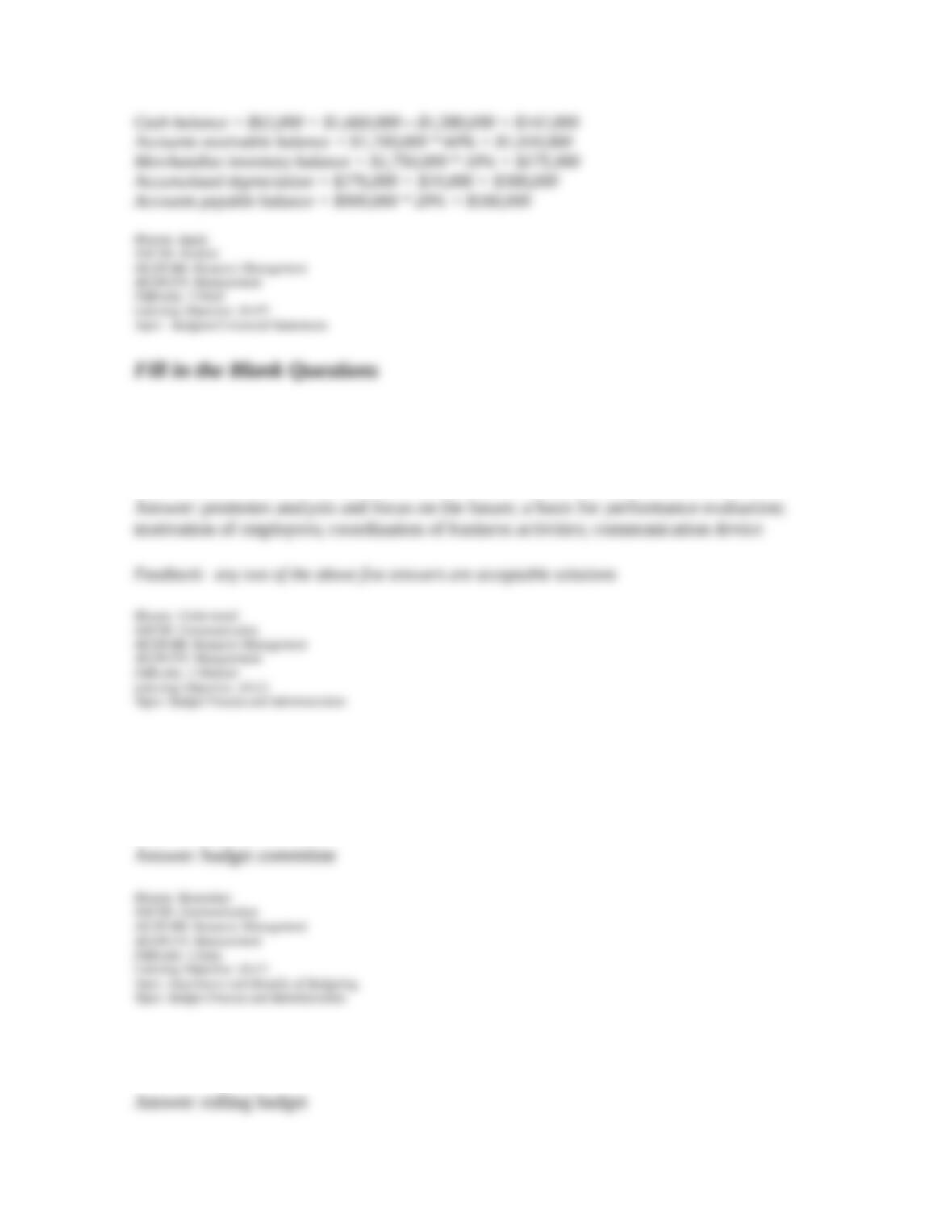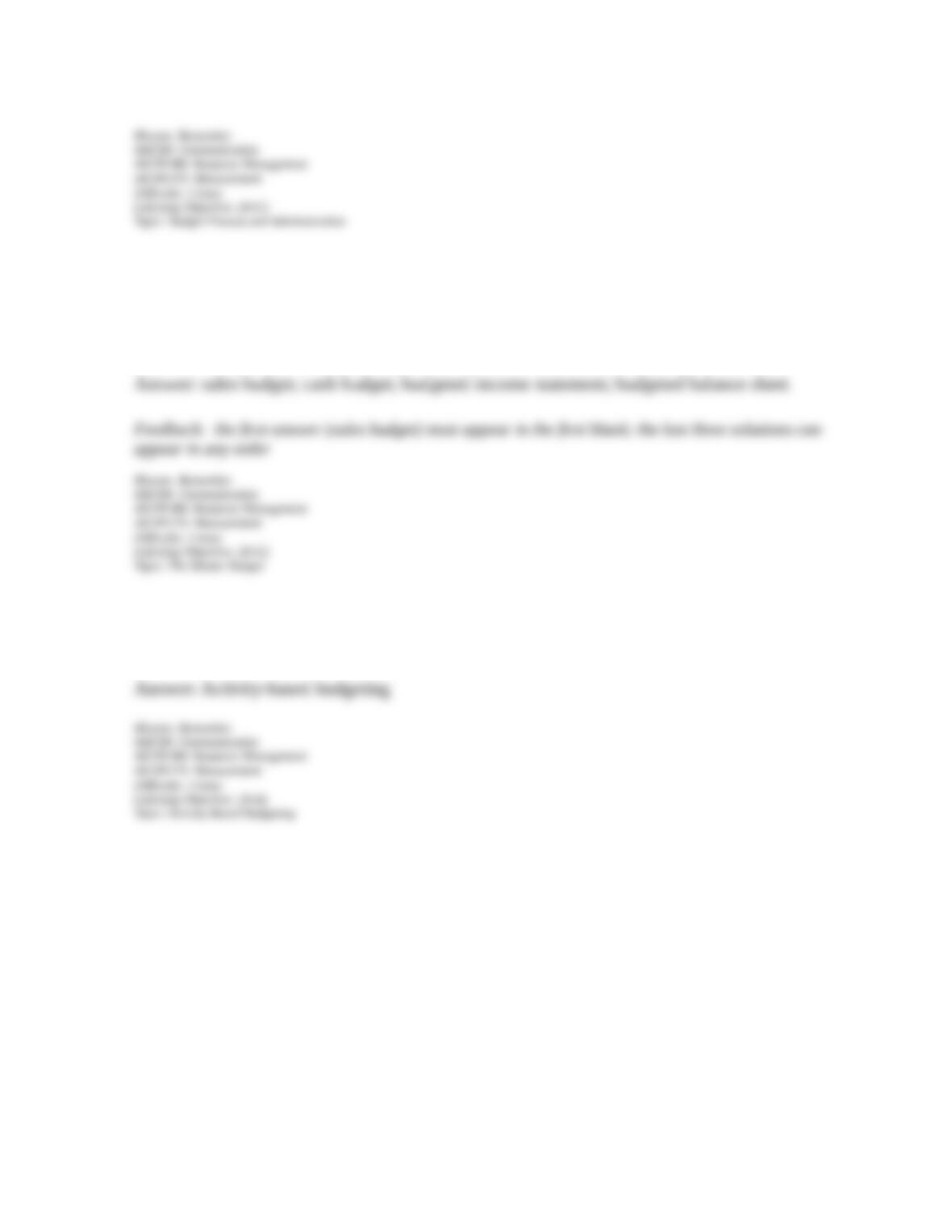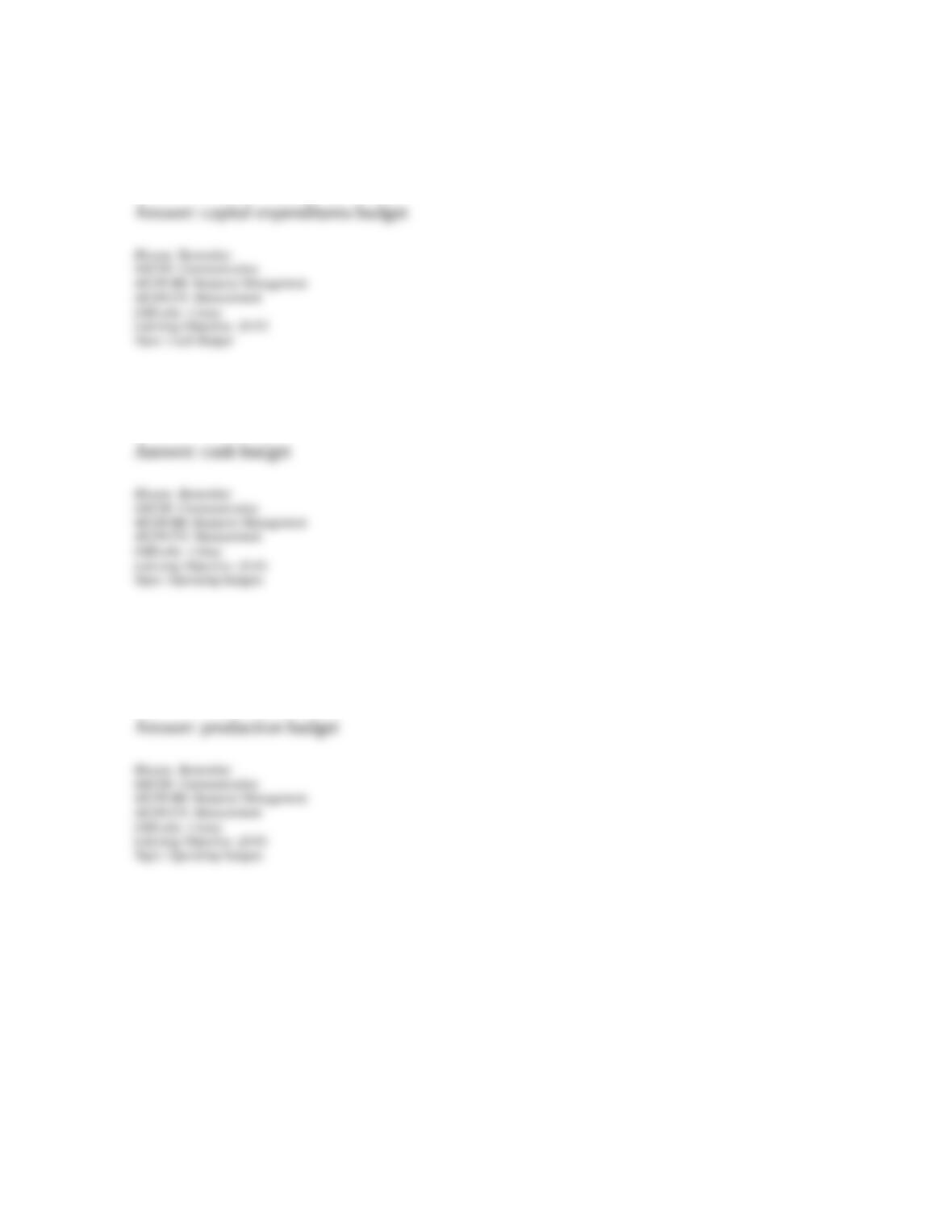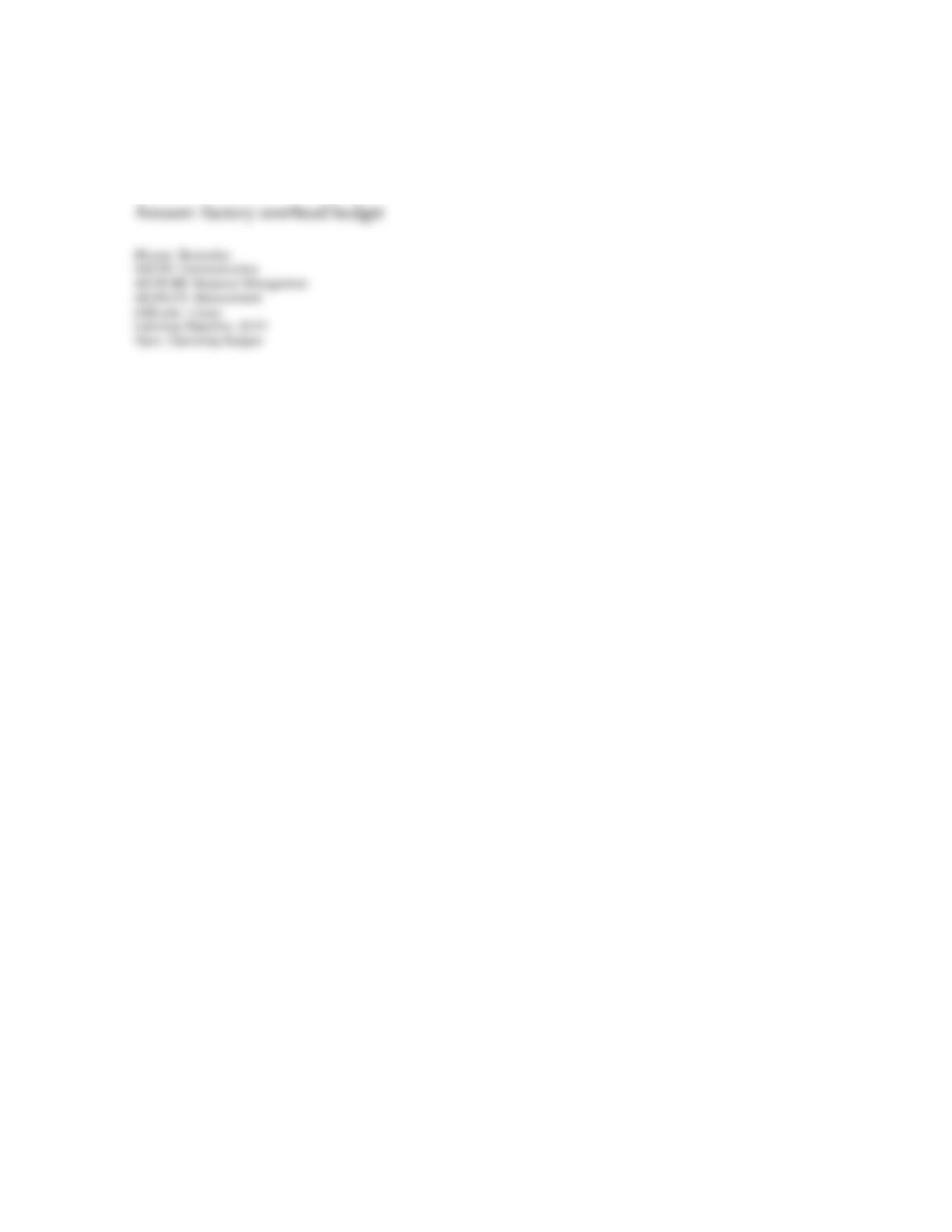170. Hammerly Corporation is preparing its master budget for the quarter ending March 31. It
sells a single product for $25 a unit. Budgeted sales are 40% cash and 60% on credit. All
credit sales are collected in the month following the sales. Budgeted sales for the next four
months follow:
January February March April
Sales in Units ………………. 1,200 1,000 1,600 1,400
At December 31, the balance in accounts receivable is $10,000, which represents the
uncollected portion of December sales. The company desires merchandise inventory equal to
30% of the next month's sales in units. The December 31 balance of merchandise inventory is
340 units, and inventory cost is $10 per unit. Forty percent of the purchases are paid in the
month of purchase and 60% are paid in the following month. At December 31, the balance of
Accounts Payable is $8,000, which represents the unpaid portion of December's purchases.
Operating expenses are paid in the month incurred and consist of:
· Sales commissions (10% of sales)
· Freight (2% of sales)
· Office salaries ($2,400 per month)
· Rent ($4,800 per month)
Depreciation expense is $4,000 per month. The income tax rate is 40%, and income taxes will
be paid on April 1. A minimum cash balance of $10,000 is required, and the cash balance at
December 31 is $10,200. Loans are obtained at the end of a month in which a cash shortage
occurs. Interest is 1% per month, based on the beginning of the month loan balance, and must
be paid each month. If the ending cash balance exceeds the minimum, the excess will be
applied to repaying any outstanding loan balance. At December 31, the loan balance is $0.
Prepare a master budget (round all dollar amounts to the nearest whole dollar) for each of the
months of January, February, and March that includes the:
· Sales budget
· Schedule of cash receipts
· Merchandise purchases budget
· Schedule of cash disbursements for merchandise purchases
· Schedule of cash disbursements for selling and administrative expenses (combined)
· Cash budget, including information on the loan balance
· Budgeted income statement for the quarter

























































































